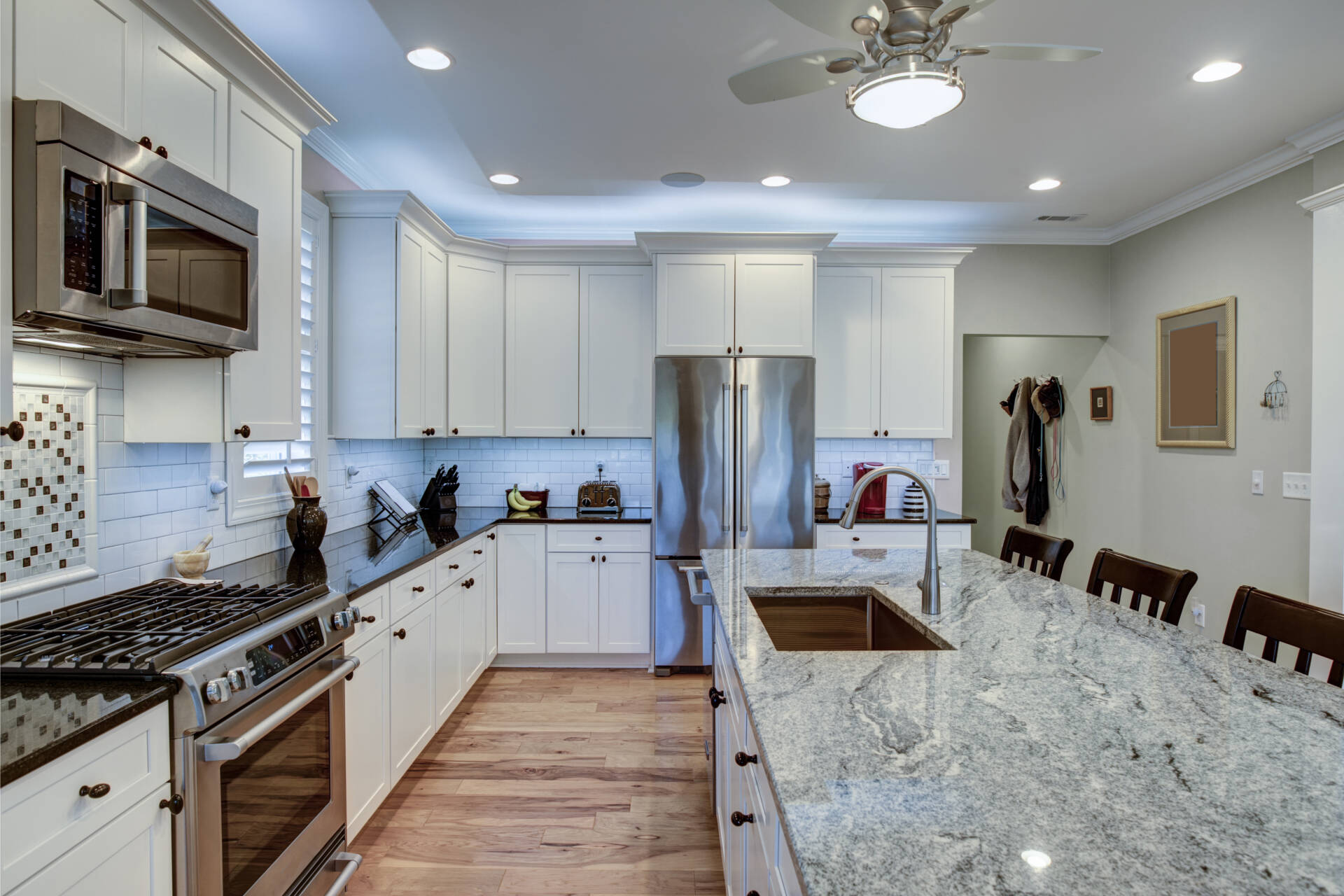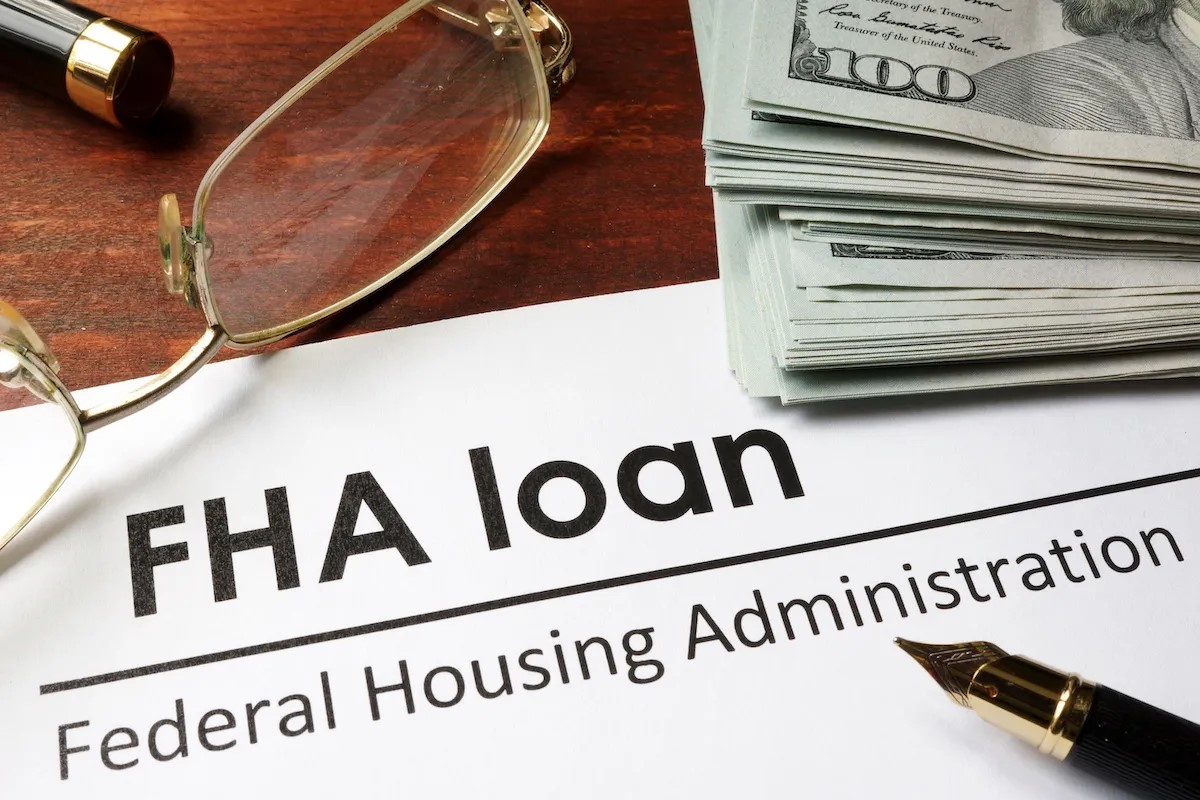Home>Renovation & DIY>Home Renovation Guides>Getting A Home Improvement Loan When Buying A House


Home Renovation Guides
Getting A Home Improvement Loan When Buying A House
Modified: January 3, 2024
Looking to finance your home renovation project? Discover how to secure a home improvement loan when purchasing a new house with our comprehensive guides. Unlock the funds you need for your dream home!
(Many of the links in this article redirect to a specific reviewed product. Your purchase of these products through affiliate links helps to generate commission for Storables.com, at no extra cost. Learn more)
**
Introduction
**
When purchasing a new home, the excitement of envisioning your dream space can be quickly overshadowed by the reality of necessary renovations. Whether it's updating the kitchen, adding a new bathroom, or revamping the entire interior, home improvements are often essential to make a new house truly feel like home. However, the costs associated with these renovations can be daunting. This is where a home improvement loan can be a game-changer.
A home improvement loan provides the financial means to turn your new house into your dream home. It offers a feasible solution for funding necessary renovations, allowing you to customize and enhance your living space. Understanding the various types of home improvement loans, the factors to consider when obtaining one, and the application process is crucial for making informed decisions. This comprehensive guide will walk you through everything you need to know about getting a home improvement loan when buying a house, empowering you to transform your new property into the perfect living space.
Key Takeaways:
- When buying a new home, getting a home improvement loan can help turn it into your dream space. Understand the types of loans, factors to consider, and the application process to make informed decisions.
- Before applying for a home improvement loan, evaluate your renovation needs, property value, credit score, and future plans. Choose the right loan type and lender to finance your renovation journey.
Read more: Where To Get A Home Improvement Loan
Understanding Home Improvement Loans
Home improvement loans are specifically designed to provide financial assistance for renovations, repairs, or enhancements to a property. These loans offer homeowners the flexibility to fund various projects, ranging from minor upgrades to major overhauls. Unlike personal loans or traditional mortgages, home improvement loans are tailored to accommodate the specific needs of renovating or improving a property.
One of the key advantages of home improvement loans is that they often come with lower interest rates compared to credit cards or personal loans. This makes them a cost-effective option for financing home renovations. Additionally, these loans can be structured with fixed interest rates and predictable monthly payments, providing a clear and manageable repayment plan.
Home improvement loans can be secured or unsecured. Secured loans are backed by collateral, typically the property itself, which can result in lower interest rates due to reduced risk for the lender. Unsecured loans, on the other hand, do not require collateral but may have higher interest rates to offset the increased risk for the lender.
Understanding the nuances of home improvement loans is essential for making informed decisions about how to finance your home renovations. By familiarizing yourself with the different types of home improvement loans and their respective terms, you can confidently choose the option that best aligns with your financial situation and renovation goals.
Types of Home Improvement Loans
When it comes to financing home improvements, there are several types of loans available to suit different needs and circumstances:
1. Home Equity Loan (HEL):
A home equity loan allows homeowners to borrow against the equity in their property. The loan amount is determined by the difference between the home’s current market value and the outstanding mortgage balance. Home equity loans typically offer fixed interest rates and a lump-sum disbursement, making them suitable for large, one-time renovation expenses such as a kitchen remodel or room addition.
2. Home Equity Line of Credit (HELOC):
Similar to a home equity loan, a HELOC also leverages the equity in a property as collateral. However, a HELOC functions more like a credit card, providing a revolving line of credit that can be accessed as needed. This flexibility makes it ideal for ongoing or phased renovation projects, allowing homeowners to borrow, repay, and borrow again within a specified draw period.
3. Personal Loans:
Unsecured personal loans can be used for various purposes, including home improvements. These loans do not require collateral and are typically based on the borrower’s creditworthiness. While they may have higher interest rates compared to secured loans, personal loans offer quick access to funds and can be a viable option for smaller renovation projects.
4. FHA Title I Property Improvement Loan:
Insured by the Federal Housing Administration (FHA), Title I loans are designed for homeowners looking to make home improvements but may not qualify for traditional home equity loans. These loans are available through approved lenders and can be used for both structural and non-structural renovations, making them a valuable option for enhancing the livability and value of a property.
5. Cash-Out Refinance:
With a cash-out refinance, homeowners can refinance their existing mortgage for a higher amount than the current loan balance. The excess funds can then be used for home improvements. This approach allows homeowners to take advantage of potentially lower interest rates and consolidate the cost of renovations into their mortgage, streamlining their debt obligations.
Each type of home improvement loan offers distinct features and benefits, catering to different renovation scenarios and financial preferences. Understanding the nuances of these loan options is crucial for selecting the most suitable financing solution for your specific home improvement needs.
When buying a house, consider getting a home improvement loan to cover renovation costs. These loans can be added to your mortgage and provide funds for upgrades or repairs.
Factors to Consider When Getting a Home Improvement Loan
Before obtaining a home improvement loan, it’s essential to evaluate several key factors to ensure that the chosen financing aligns with your renovation goals and financial circumstances:
1. Renovation Scope and Cost:
Begin by clearly defining the scope of your renovation project and estimating the associated costs. This comprehensive understanding will help determine the amount of financing required and guide the selection of an appropriate loan type.
2. Equity and Property Value:
If considering a home equity loan or HELOC, assess the equity in your property and its current market value. Lenders typically have specific loan-to-value requirements, and a realistic understanding of your property’s equity will influence the available financing options.
3. Creditworthiness:
Review your credit score and history to gauge your creditworthiness. A strong credit profile can increase your eligibility for favorable loan terms, such as lower interest rates and higher loan amounts. Conversely, addressing any credit issues beforehand can potentially improve your loan options.
4. Repayment Ability:
Evaluate your current financial situation and ensure that you have the means to comfortably repay the loan. Consider factors such as existing debt obligations, income stability, and future financial outlook to determine a repayment plan that aligns with your budget.
5. Loan Terms and Interest Rates:
Compare the terms and interest rates offered by different lenders or loan types. Assess whether fixed or variable rates are more suitable for your financial strategy and consider any associated fees or closing costs.
6. Project Timeline:
If your renovation project has a specific timeline, ensure that the chosen loan provides timely access to funds. For ongoing projects, a flexible financing option like a HELOC may be preferable, while lump-sum disbursements from home equity loans can suit one-time, larger expenses.
7. Future Plans and Resale Value:
Consider the long-term implications of your renovations on the property’s resale value and your future housing plans. Assess whether the proposed improvements align with your long-term goals and have the potential to enhance the property’s marketability.
By carefully considering these factors, you can make informed decisions when obtaining a home improvement loan, ensuring that the chosen financing solution is well-suited to your renovation project and financial objectives.
How to Apply for a Home Improvement Loan
Applying for a home improvement loan involves several key steps to ensure a smooth and successful process:
1. Assess Your Financing Needs:
Begin by evaluating the scope and cost of your renovation project. Determine the specific amount of financing required to accomplish your renovation goals, taking into account potential contingencies and additional expenses.
2. Research Lenders and Loan Options:
Explore different lenders and loan products to identify the most suitable financing options for your needs. Compare interest rates, loan terms, and eligibility requirements to select a lender and loan type that align with your renovation plans and financial situation.
3. Gather Necessary Documentation:
Prepare the required documentation, which may include proof of income, credit history, property information, and details about the planned renovations. Organizing these documents in advance can streamline the application process and expedite the lender’s assessment of your loan request.
4. Complete the Loan Application:
Submit a loan application to the chosen lender, either through their online portal, in-person at a branch, or via mail, as per their specific application procedures. Provide accurate and comprehensive information to facilitate the lender’s evaluation of your loan request.
5. Undergo the Lender’s Assessment:
Upon receiving your application, the lender will assess your creditworthiness, property value, and renovation plans. They may request additional information or documentation during this stage to verify the details provided in your application.
6. Await Loan Approval and Terms:
Once the lender has completed their assessment, you will receive notification regarding the approval status of your loan application. If approved, carefully review the loan terms, including interest rates, repayment schedule, and any associated fees or closing costs.
7. Accept the Loan Terms and Disbursement:
If satisfied with the offered terms, accept the loan agreement and any associated disclosures. Upon acceptance, the lender will finalize the loan disbursement process, providing you with the funds to commence your renovation project.
8. Initiate Your Renovation Project:
With the funds in hand, you can initiate your renovation project as planned. Adhere to the proposed timeline and budget, utilizing the loan proceeds to finance the necessary improvements to your home.
By following these steps and maintaining open communication with your chosen lender throughout the process, you can effectively apply for a home improvement loan and secure the financing needed to enhance your living space.
Read more: How To Get A Loan To Do Home Improvements?
Conclusion
Securing a home improvement loan when buying a house can be a pivotal step in transforming a property into your ideal living space. By understanding the various types of home improvement loans, evaluating crucial factors, and navigating the application process, you can effectively finance and execute your renovation plans. Whether it’s a kitchen remodel, bathroom upgrade, or overall property enhancement, a well-suited home improvement loan can provide the financial means to turn your vision into reality.
When considering a home improvement loan, it’s essential to carefully assess your renovation needs, property equity, creditworthiness, and long-term financial objectives. By doing so, you can select a loan type and lender that align with your specific requirements, ensuring a seamless and manageable financing experience.
Furthermore, the successful application and approval of a home improvement loan can empower you to embark on your renovation journey with confidence. Whether you opt for a home equity loan, HELOC, personal loan, FHA Title I loan, or a cash-out refinance, each financing option offers unique benefits that cater to different renovation scenarios and financial preferences.
By leveraging the insights and guidance provided in this comprehensive guide, you can navigate the process of obtaining a home improvement loan with clarity and purpose. From assessing your financing needs to initiating your renovation project, each step plays a crucial role in realizing your vision for your new home.
Ultimately, a well-executed and thoughtfully financed renovation can elevate the comfort, functionality, and value of your property, creating a space that truly reflects your lifestyle and preferences. With the right home improvement loan, you can embark on this transformative journey with the assurance of financial support and a clear path toward achieving your renovation goals.
Embrace the opportunity to enhance your new home through strategic financing and thoughtful renovations, and embark on a rewarding journey of creating a living space that perfectly aligns with your vision and aspirations.
Frequently Asked Questions about Getting A Home Improvement Loan When Buying A House
Was this page helpful?
At Storables.com, we guarantee accurate and reliable information. Our content, validated by Expert Board Contributors, is crafted following stringent Editorial Policies. We're committed to providing you with well-researched, expert-backed insights for all your informational needs.















0 thoughts on “Getting A Home Improvement Loan When Buying A House”